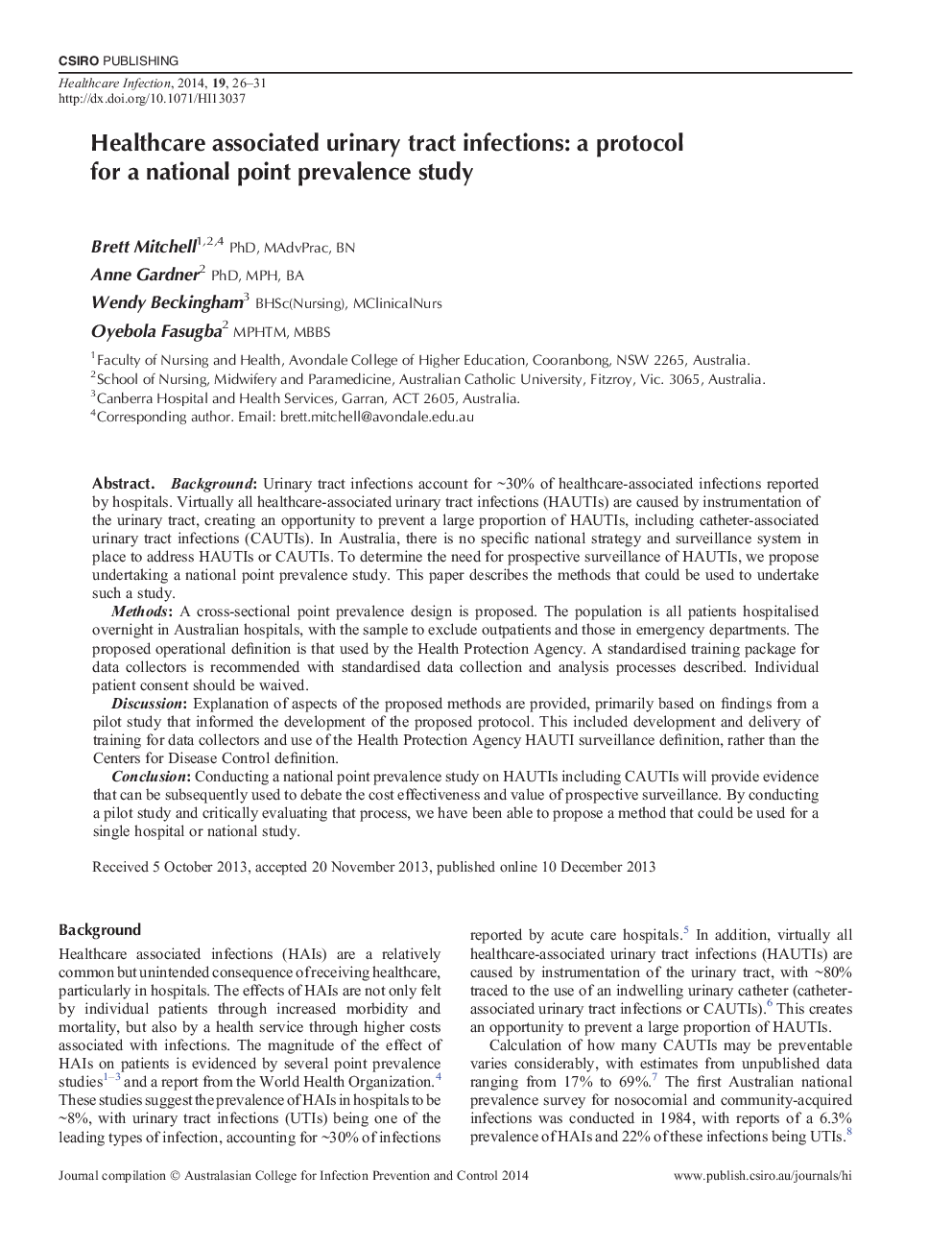| Article ID | Journal | Published Year | Pages | File Type |
|---|---|---|---|---|
| 2683357 | Healthcare infection | 2014 | 6 Pages |
BackgroundUrinary tract infections account for ~30% of healthcare-associated infections reported by hospitals. Virtually all healthcare-associated urinary tract infections (HAUTIs) are caused by instrumentation of the urinary tract, creating an opportunity to prevent a large proportion of HAUTIs, including catheter-associated urinary tract infections (CAUTIs). In Australia, there is no specific national strategy and surveillance system in place to address HAUTIs or CAUTIs. To determine the need for prospective surveillance of HAUTIs, we propose undertaking a national point prevalence study. This paper describes the methods that could be used to undertake such a study.MethodsA cross-sectional point prevalence design is proposed. The population is all patients hospitalised overnight in Australian hospitals, with the sample to exclude outpatients and those in emergency departments. The proposed operational definition is that used by the Health Protection Agency. A standardised training package for data collectors is recommended with standardised data collection and analysis processes described. Individual patient consent should be waived.DiscussionExplanation of aspects of the proposed methods are provided, primarily based on findings from a pilot study that informed the development of the proposed protocol. This included development and delivery of training for data collectors and use of the Health Protection Agency HAUTI surveillance definition, rather than the Centers for Disease Control definition.ConclusionConducting a national point prevalence study on HAUTIs including CAUTIs will provide evidence that can be subsequently used to debate the cost effectiveness and value of prospective surveillance. By conducting a pilot study and critically evaluating that process, we have been able to propose a method that could be used for a single hospital or national study.
